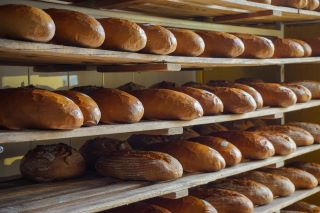Decision-makers who trade in perishable goods often do not make optimal decisions when it comes to their own orders. A team with WiSo Professor Ulrich Thonemann has first empirically investigated the systematic distortions behind this.
Anyone who trades in perishable goods is faced with the special challenge that their products will sooner or later become worthless. A key question is, which quantities of a product have to be ordered or produced in order to achieve a certain service level for the customers? At the same time prevent overstocks, and the whole thing only in the rarest of cases with a constant demand.
In management, this dilemma is known as a classic problem in operations management and has been widely researched as the "newsvendor modell". Experimentally, for example, it has been possible to predict that decision-makers rarely make the optimal decision. Instead, subjects usually reacted excessively to current demand and their order volumes shifted towards average demand. Scientifically speaking: There are distortions in terms of behavioral forecasts and in terms of minimising inventory errors, which results in service levels that are not efficiently achieved. The costs of achieving the desired service-level are correspondingly higher than they should be.
Whether these distortions also exist in practice has now been analytically examined by a team with Wiso Professor Ulrich W. Thonemann based on orders from a backing goods manufacturer supplying large food retailers throughout Europe. In their study, Anna-Lena Sachs, Michael Becker-Peth, Stefan Minner, and Ulrich Thonemann found that the manufacturers were generally subject to the same distortions as the test subjects in the laboratory. The effects therefore also apply in a multi-product setting with an aggregated service level.
In addition, Professor Thonemann and his colleagues discovered another bias that had previously gone undetected in the experiment and which they call group aggregation. The service level is optimised by the manufacturer not for individual products, but for product groups. Although this simplifies the ordering process, it is detrimental to efficiency, according to the scientists.
Overall, the various biases resulted in an efficiency gap of 0.1% from errors in minimising inventory errors, 2.5% from erroneous behavioral forecasts, and 5.2% from group aggregation. The results of the study therefore show that the elimination of these behavioral errors can increase operating profit by around 8%. If the "perishable" products are food, a considerable contribution to reducing food waste.
